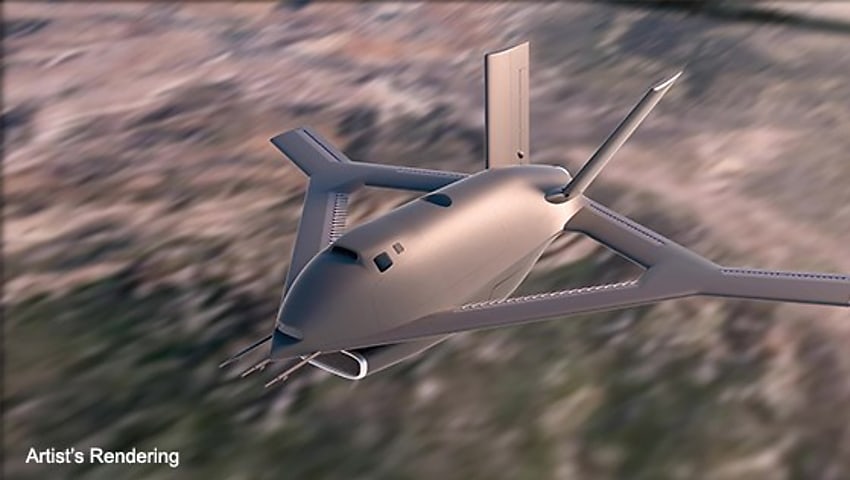Aurora Flight Sciences has been selected by the Defense Advanced Research Projects Agency (DARPA) to build a full-scale X-plane capable of using active flow control actuators for flight control and no moving control surfaces.
To continue reading the rest of this article, please log in.
Create free account to get unlimited news articles and more!
The American aviation and aeronautics research subsidiary of Boeing is tasked with creating the aircraft under Phase 3 of the Control of Revolutionary Aircraft with Novel Effectors program.
The new 3,100-kilogram, 30-foot wingspan unmanned X-65 system is envisioned to utilise jets of air from a pressurised source to shape the flow of air over the aircraft surface, with active flow control (AFC) effectors on several surfaces to control the plane’s roll, pitch, and yaw. Such a system would eliminate external moving parts, reduce weight and complexity, and improve performance.
Aurora Flight Sciences has already started fabricating the X-plane and the X-65 is scheduled to be rolled out in early 2025 with the first flight planned for that same year. It is expected to be capable of speeds up to Mach 0.7.
“The X-65 is a technology demonstrator and it’s distinctive, diamond-like wing shape is designed to help us maximise what we can learn about AFC in full-scale, real-world tests,” according to Dr Richard Wlezien, DARPA’s program manager for CRANE.
“The X-65 conventional surfaces are like training wheels to help us understand how AFC can be used in place of traditional flaps and rudders.
“We’ll have sensors in place to monitor how the AFC effectors’ performance compares with traditional control mechanisms, and these data will help us better understand how AFC could revolutionise both military and commercial craft in the future.
“We’re building the X-65 as a modular platform – wing sections and the AFC effectors can easily be swapped out – to allow it to live on as a test asset for DARPA and other agencies long after CRANE concludes.
“It’s thrilling to be able to say, ‘We’re building an AFC X-plane’. I came to DARPA in 1999 to work on a program called Micro Adaptive Flow Control, which help pioneer the foundational understanding of fluid dynamics that eventually led to CRANE. I left DARPA in 2003 after managing MAFC, and it’s the chance of a lifetime to come back and help see that early work come to fruition in a full-scale physical aircraft. Aerospace engineers live to see their efforts take flight.”
The X-65 will be built with two sets of control actuators – traditional flaps and rudders as well as AFC effectors embedded across all the lifting surfaces – to minimise risk and maximise the program’s insight into control effectiveness. The plane’s performance with traditional control surfaces will serve as a baseline; successive tests will selectively lock down moving surfaces, using AFC effectors instead.

 Login
Login







